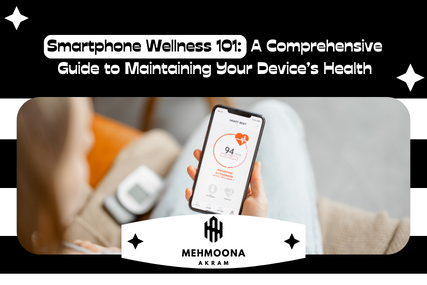
A Comprehensive Guide to Maintaining Your Smartphone’s Health
In today’s digital age, smartphones have become an integral part of our daily lives. We rely on these devices for communication, entertainment, productivity, and more. Given their importance, it’s crucial to ensure that our smartphones remain in good health and continue to perform optimally. In this comprehensive guide, we will explore various strategies and tips to maintain the health of your phone.
Keep it Clean
The first step in maintaining your smartphone’s health is to keep it clean. Over time, dust, dirt, and smudges can accumulate on the screen and in the ports, potentially causing issues with the device’s functionality. Here’s what you can do:
Use a microfiber cloth to gently wipe the screen and the body of the phone.
Use a can of compressed air to remove dust and debris from the ports and speaker grills.
Avoid using abrasive materials or harsh chemicals as they can damage the phone’s finish and screen.
Use a Screen Protector and Case
Investing in a good-quality screen protector and a protective case can go a long way in safeguarding your smartphone from scratches, drops, and other potential damage. These accessories provide an extra layer of protection, helping to preserve the appearance and functionality of your device.
Regularly Update Your Operating System
Operating system updates often include bug fixes, security patches, and performance improvements. Keeping your phone’s operating system up to date is crucial for its security and overall health. To check for updates:
For Android devices, go to Settings > Software Update.
For iOS devices, go to Settings > General > Software Update.
Manage App Updates
In addition to the operating system, regularly updating your apps is essential. Developers release updates to fix bugs, enhance features, and improve app performance. Enable automatic app updates in your device settings to ensure you’re always running the latest versions.
Clear Cache and Unnecessary Files
Over time, apps accumulate cache and temporary files that can take up valuable storage space and slow down your smartphone. Periodically clearing these files can help improve performance:
For Android, go to Settings > Storage > Cached data, and tap to clear.
For iOS, app-specific cache can be cleared in Settings > [App Name] > Clear Cache.
Manage Storage
Running out of storage space can significantly affect your smartphone’s performance. To manage your storage:
Regularly delete old photos, videos, and files you no longer need.
Offload or delete unused apps.
Use cloud storage services like Google Drive or iCloud to store and backup your files.
Be Mindful of Battery Health
Your smartphone’s battery is a critical component of its health. To ensure its longevity:
Avoid overcharging. Unplug your phone when it reaches 100%.
Avoid deep discharges. Charge your phone before it reaches a critically low battery level.
Use a high-quality charger and cable.
If your device has a battery optimization feature, enable it.
Protect Against Malware and Viruses
Smartphones are susceptible to malware and viruses just like computers. Protect your device by:
Installing a reputable antivirus app from a trusted source.
Only downloading apps from official app stores like Google Play Store or Apple App Store.
Avoiding suspicious links and downloads from unknown sources.
Use Secure Lock Methods
Securing your smartphone with a strong lock method, such as a PIN, password, fingerprint, or facial recognition, is essential to protect your personal data in case your device is lost or stolen. Don’t rely solely on swipe or pattern locks, as they are less secure.
Be Cautious with Software Modifications
Rooting (Android) or jailbreaking (iOS) your phone can provide more control and customization options, but it can also expose your device to security risks and void warranties. Only consider these modifications if you are fully aware of the potential consequences.
Avoid Extreme Temperatures
Extreme temperatures, both hot and cold, can negatively impact your smartphone’s battery life and overall performance. Avoid leaving your phone in direct sunlight or in a freezing car for extended periods.
Backup Your Data
Regularly back up your data to ensure you don’t lose valuable information in case of accidents, theft, or hardware failures. You can use cloud-based backup services or connect your phone to a computer for manual backups.
Manage Background Processes
Apps running in the background can consume resources and drain your battery. Review and limit background processes in your device settings to optimize performance:
For Android, go to Settings > Apps > [App Name] > Battery > Background restriction.
For iOS, go to Settings > General > Background App Refresh.
Factory Reset as a Last Resort
If your smartphone is experiencing persistent issues that can’t be resolved through other means, consider performing a factory reset. This will erase all data on your phone, so make sure to back up everything important first. Factory resets can often resolve software-related problems and restore your device to its original performance.
In conclusion, maintaining the health of your smartphone is essential to ensure it continues to meet your needs and perform at its best. By following the tips and strategies outlined in this comprehensive guide, you can prolong the life of your device, improve its performance, and enjoy a seamless smartphone experience for years to come. Remember that prevention and regular maintenance are key to keeping your smartphone in top-notch condition.



